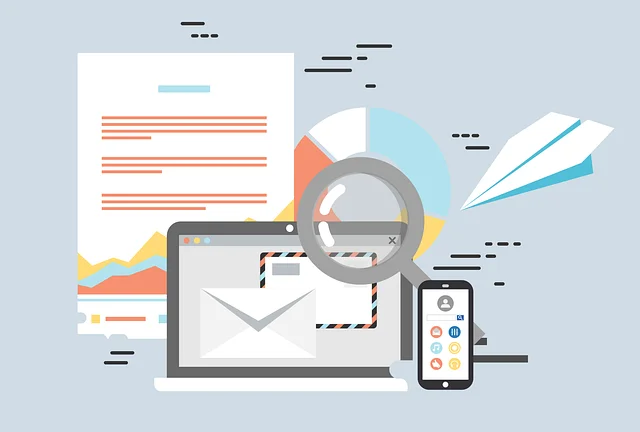Your email address is one of the most critical pieces of information in your digital life. It’s often used for personal communication, online transactions, and as a gateway to other accounts such as social media, banking, and shopping platforms. As a result, protecting your email address from hackers is crucial to ensure your personal information and online activities remain secure. Here are some essential steps you can take to protect your email address from unauthorized access. Certified ethical hacker hire
Safeguard Your Email: Protect Against Hackers Now

1. Use a Strong, Unique Password
The foundation of your email security starts with a strong password. A weak or commonly used password makes it easier for hackers to gain access to your account.
- How to create a strong password: Choose a password that is at least 12 characters long and includes a combination of uppercase letters, lowercase letters, numbers, and special characters. Avoid using easily guessable information, such as your name, birthday, or common words.
- Password manager: Use a password manager to generate and store strong passwords for your email and other accounts. This ensures that each account has a unique and complex password.
2. Enable Two-Factor Authentication (2FA)
Two-factor authentication (2FA) adds an extra layer of security to your email account. Even if a hacker obtains your password, they will need a second form of verification to access your account.
- How to enable 2FA:
- Most email providers, such as Gmail and Outlook, offer 2FA options. You can enable it through your account security settings.
- Choose to receive a verification code via SMS, use an authentication app (like Google Authenticator or Authy), or use biometric authentication (fingerprint or facial recognition).
- Why it works: 2FA makes it significantly harder for hackers to access your account, as they would need both your password and the second form of verification.
3. Be Cautious About Phishing Scams
Phishing is one of the most common methods hackers use to steal your email credentials. Phishing scams often come in the form of fake emails, fake login pages, or links that look legitimate but are designed to steal your login information.
- How to spot phishing emails:
- Look for signs of suspicious emails, such as poor grammar, a sense of urgency, or unfamiliar sender addresses.
- Avoid clicking on links or downloading attachments from unknown or unexpected emails.
- Tip: Always verify the authenticity of any email or link by checking the sender’s address or contacting the company or person directly through their official website or phone number.
4. Regularly Update Your Email Password
Changing your email password regularly helps minimize the risk of unauthorized access. If your password has been exposed in a data breach or you suspect it has been compromised, change it immediately.
- Why it works: Regularly updating your password reduces the chances of someone gaining long-term access to your email account, especially if they already have your old password.
5. Monitor Your Account for Suspicious Activity
Many email services offer account activity logs that let you see where and when your account was accessed. Regularly review these logs for unusual activity.
- How to monitor account activity:
- In Gmail, for example, go to Account Settings > Security > Recent Security Events to view recent login activity.
- If you notice any unfamiliar locations or devices accessing your account, change your password immediately and consider enabling 2FA.
- Why it works: Monitoring your account for unusual behavior helps you catch potential breaches early and act to protect your account.
6. Use a Secure Connection (HTTPS)
Whenever you access your email, ensure that the connection is secure by checking for “HTTPS” in the URL. This indicates that your email provider is using encryption to protect your data during transmission.
- Why it works: A secure connection prevents hackers from intercepting your data and login credentials while you’re using email services on public Wi-Fi networks or other vulnerable connections.
7. Be Careful with Public Wi-Fi
Accessing your email over public Wi-Fi networks can expose you to the risk of hackers intercepting your data. Avoid logging into sensitive accounts, including email, on public networks.
- How to protect yourself:
- Use a virtual private network (VPN) when accessing your email on public Wi-Fi. A VPN encrypts your internet traffic, making it harder for hackers to monitor your activity.
- If you must use public Wi-Fi, avoid accessing your email unless absolutely necessary.
- Why it works: Using a VPN or avoiding public networks altogether adds a layer of security when accessing sensitive information like your email.
8. Review and Manage Email App Permissions
Sometimes, third-party apps or services can gain access to your email account, which can create vulnerabilities. Regularly review which apps and services have access to your email.
- How to manage permissions:
- In Gmail, go to Account Settings > Security > Third-party apps with account access to review apps and services connected to your email account.
- Remove any apps you no longer use or trust.
- Why it works: Limiting app access to your email reduces the potential attack surface for hackers.
9. Use Encrypted Email Services
For highly sensitive communications, consider using email services that offer end-to-end encryption. These services ensure that only you and the intended recipient can read your emails, even if hackers gain access to your email account.
- Popular encrypted email services: ProtonMail, Tutanota, and Mailfence are all good options for secure email communication.
- Why it works: Encrypted email services protect the contents of your messages, even if a hacker manages to access your account.
10. Stay Informed About Security Breaches
Regularly check for news about data breaches or hacks that might affect your email provider. If your email provider is compromised, change your password immediately and take further protective steps.
- Why it works: Staying informed ensures that you can quickly react to breaches affecting your email service and prevent hackers from gaining access to your account.
Conclusion
Protecting your email address from hackers is essential in safeguarding your personal information and online security. By using strong passwords, enabling two-factor authentication, staying cautious about phishing attempts, and regularly monitoring your account, you can significantly reduce the risk of unauthorized access. By staying vigilant and proactive, you can help ensure that your email remains secure and that your sensitive information stays safe from hackers.
